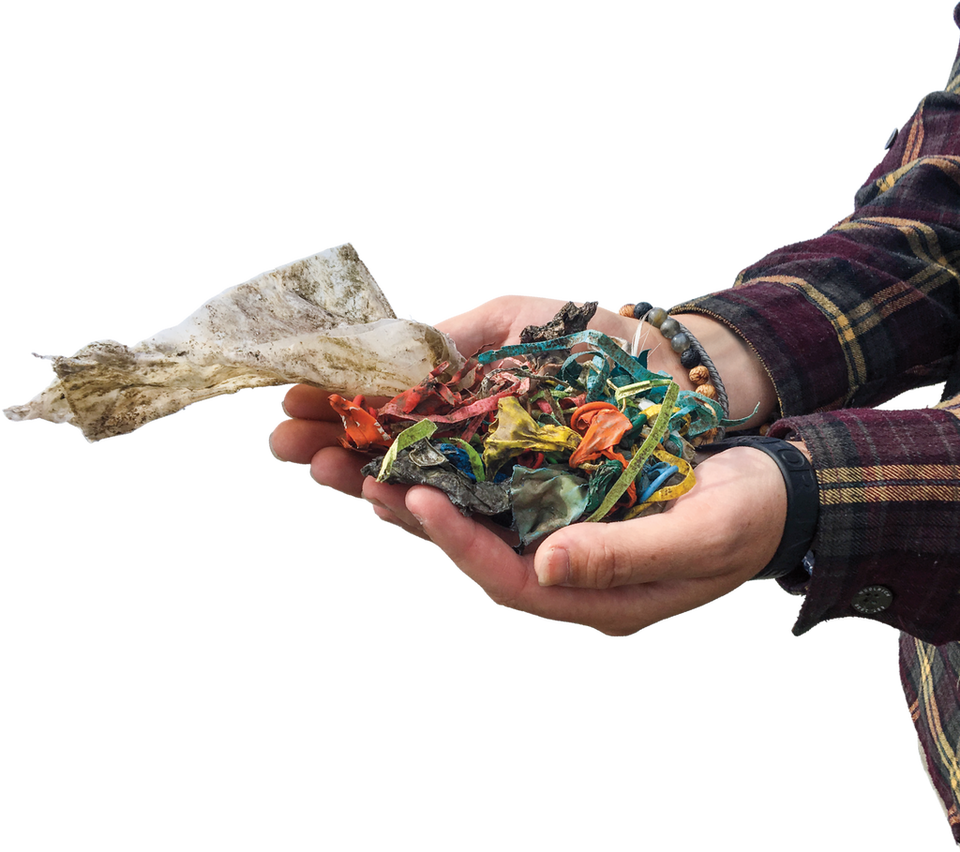So,thereIwasinaremotepartofGreenland.Iwasholdingabirdcalledalittleaukinmyhand,waitingforittopoop.Now,beforeyouask,theanswerisno.ThisisnotwhatIexpectedtobedoingonmyfirstmajorresearch expedition.
Asamarinebiologist,Iwasgoingtostudywheretheselittleseabirdsweregettingtheirfood.Ihadputtrackingdevicesonthebirds.Theylookedlikeelectronicbackpacks.Theideawastocollectthebackpackswhenthebirdscamebackfromtheirfoodflights.Iwouldthenretrievethedata.Thebackpackswouldshowwheretheyhadflowntowhileoutto sea.
Ihadn’tcountedonthebackpacktrackersfallingoffthebirdsintotheocean.But,that’sexactlywhathappened.Myprojectwasruined!Orwas it?
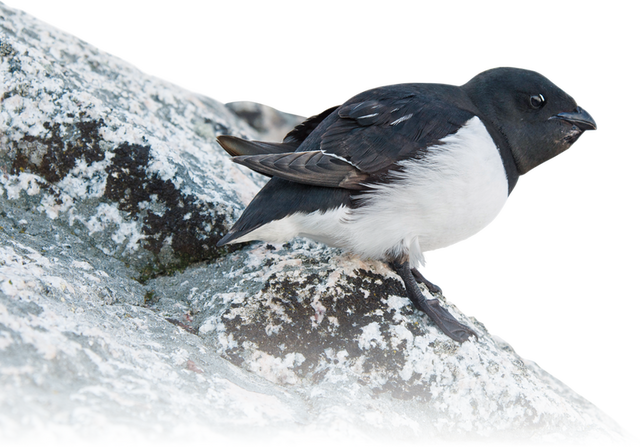
alittle auk
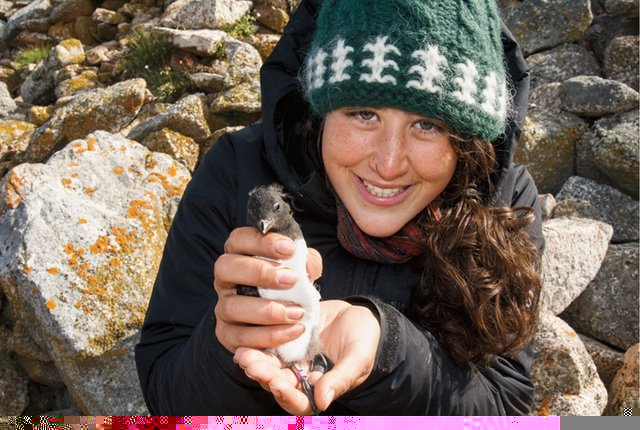
Ihadtothinkfast.Thenitcametome.Imaynotbeabletotrackwheretheygottheirfood,butIcouldanalyzewhatthey’deaten.Whenthebirdscamebacktoland,Icaughtthem.Igentlyheldthemovermynotebookandwaited.Whenabirdpooped,Ihadmysample.Ididthis110 timesfor110 samples.Glamorous!
Whilewaitingtohavemysamplesanalyzedatthelab,Icameacrosssometroublingnews.Anotherresearcherhadlearnedthatparentbirdswerebringingback plastic fortheirchickstoeat.WouldIfindplasticinmypoopsamples, too?
JustineAmmendoliaholdsalittle auk.
CareerChange
Ireturnedhometothinkaboutthesethings.IliveinNewfoundlandineasternCanada.ThisislandisasfareastinNorthAmericaasyoucanget.Theoceanandfishingplayaveryimportantroleforthepeopleontheisland.But,Iknewthatourshoreswerealsopilingupwith plastic.
It’shardtosolveaproblembeforeyouunderstandit.Ihadalotofquestions.Howmuchplasticwasgettingintotheoceans?Wherewasitcomingfrom?Whattypesofplasticswerethey?Ihadtofigurethisoutbeforetacklingthebiggerquestion.Howcanwestopplasticsfromgettinginto oceans?
Ibecameagarbagedetective.MyresearchpartnersandIdecidedtocreatea“plasticsprofile”ofsevenbeachesinNewfoundland.Whatwasthere?Wherewasitcoming from?
Greenland
Labrador
CANADA
NORTH
AMERICA
PACIFIC
OCEAN
ATLANTIC
OCEAN
Newfoundland

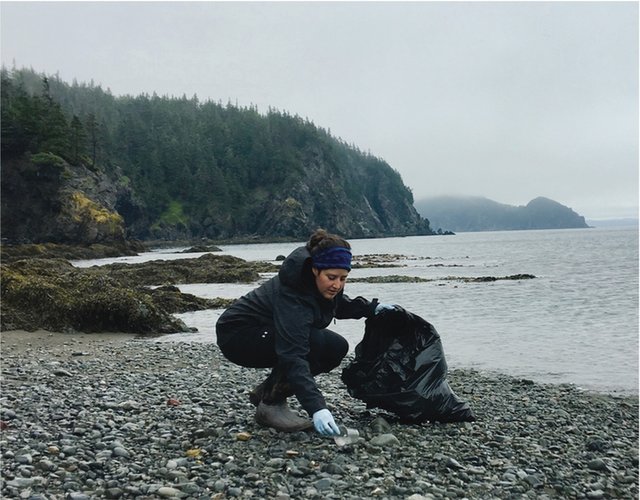
Collectingplastictrashfromthebeachisimportantscienceformyteam’sresearch.Butitisn’tglamorous work!
Overtime,abeachshowsyouitspersonalitybythetypesofplasticthatendupthere.Somebeacheshavelotsofplasticfoamfromtake‑outcontainers.Othershavefishinggear,likeplasticropesand nets.
Onebeachhadatinyplant,strugglingtogrowpastthemoundsoftrash.ThenIlookedalittle closer.
DetectiveWork
Everymonth,myresearchpartnersandIvisitthesamebeachesandrecordwhattypesofplasticgarbagewefind.Thisisnotexcitingwork.It’sslow andtedious.Therecanbestrongwinds.It’salmostalwayswet.Itcanevenbedepressing.ButIcan’tthinkofabetterwaythanthistogetahandleonthe problem.
Tomostpeople,oceanpollutionmeanswaterbottlesorplasticbags.Wefindothertrash,too:metal,glass,rubber,even lumber.
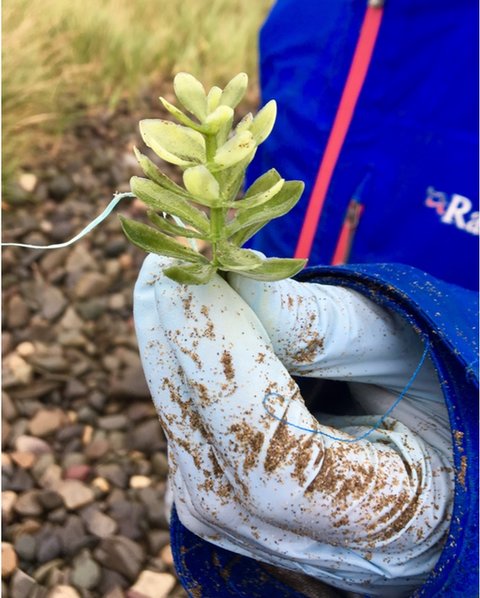
aplastic plant
BitsandPieces
Itturnsout,theplantwasplastic!Itwasoneofthosefakeplantsthatyouputinafishtank.How disappointing!
Mostoftheplasticswefindaretiny.They’recalled microplastics. Thisisanypieceofplasticthatislessthanfivemillimetersinsize.Theyarehardtoidentifysincetheyhavelosttheiroriginalshape.Also,theyleavefewcluestowheretheycome from.
Thishandfuloftrashismadeupofallsingle‑use plastic.
Still,wewerebeginningtomakeconnectionsbetweenbigpiecesofgarbageandmicroplastics.Onebeach,forexample,waslitteredwiththin,plasticthreads.Thethreadswerecomingfromfrayedfishingropes!Sometimesropesgetfrayedandburntfromsunexposure.Theybreakfreefromropesandenduponthe beaches.
